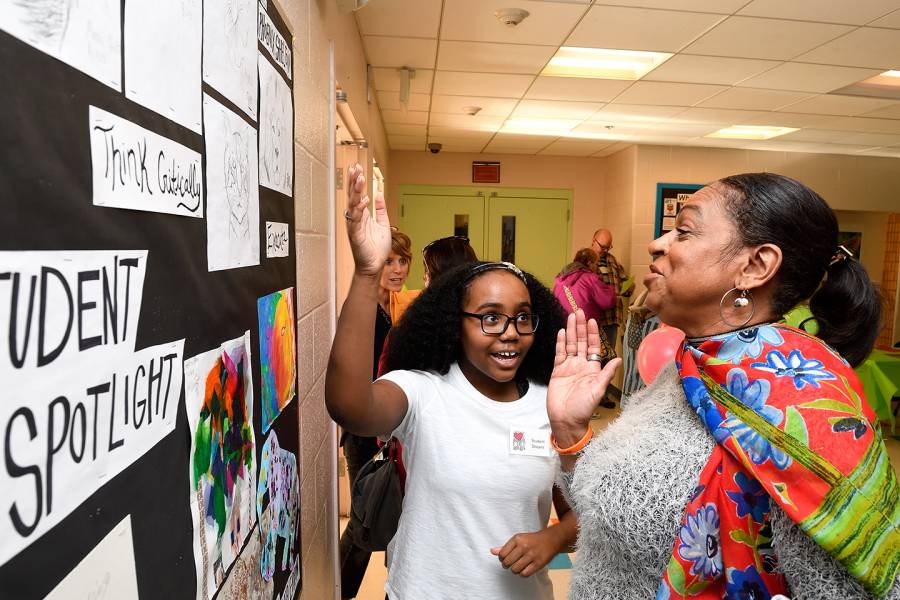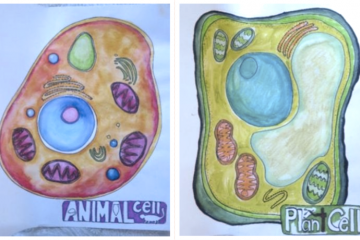Seventh-grader Phoenix Shelton proudly pointed to some sketches on a bulletin board near the entrance to Baltimore's Margaret Brent Elementary/Middle School last week. "These are the pictures I did: a rabbit, lips, a flower, a cat, and a lion," she explains. She likes working in black-and-white, she says, drawing her figures as realistically as possible. When asked how she honed her craft, she points to lessons from her artistically inclined father—and a little help from math class.
Shelton's artist meet-and-greet was part of The Power of Positive Art, the third annual showcase hosted at the Charles Village school to celebrate its commitment to the arts and arts integration, a methodology that builds relationships between learning in the arts and learning other subjects. The entire Margaret Brent faculty has been trained in arts integration strategies and the Brain Targeted Teaching Model through a partnership with the Johns Hopkins School of Education.
For Shelton, it was math class that taught her about lines, line segments, and measurements. For the group of eighth-grade girls huddled over a laptop just across the hallway, podcasting served as an invitation to interpret the meaning of Dear Martin quote, "If nothing in the world ever changes, what type of man are you gonna be?" And for first-grader James Larry, building a shoebox diorama, complete with twigs and painted fluffs of cotton, helped him understand the causes of flooding in Nebraska. The event also included interactive art stations and student performances by iRhyme, Single Carrot Theatre, and OrchKids.
Leading the annual showcase are teachers Jaime Clough and Rachael Barillari, both 2016 graduates of JHU's School of Education, who regularly incorporate art into their lessons on English, social studies, math, and science.
"What you would see if you were walking around the building, often, is an art project happening for a kid to be assessed—as a way of showing knowledge—but then also teaching multiplication facts with a song," Clough says. "So it happens at every phase of the learning process, and the students are really comfortable with it, because it happens so often."
Clare Grizzard, arts integration specialist for the Johns Hopkins Neuro-Education Initiative, works onsite with educators to teach the neuroscience behind arts integration, share lesson plans, and instill within them the BTT model developed by vice dean of academic affairs Mariale Hardiman. Hardiman's recently published research in Trends in Neuroscience in Education shows that incorporating the arts into science lessons can help low-achieving students retain more knowledge.
The Power of Positive Art showcase, Grizzard says, is proof that her training has had a lasting impact on the school's approach to education.
"Now I know and believe that this is a sustainable thing happening at Margaret Brent," she says. "They have taken in these experiences that we've had, and they've made it their own. They really embody arts integration now."
Posted in Arts+Culture, Community
Tagged education, community, arts integration









